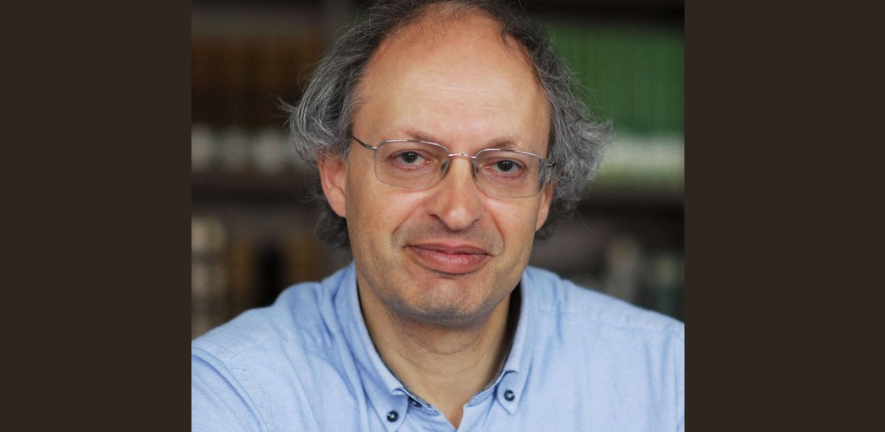
Submitted by Jane Durkin on Mon, 25/10/2021 - 11:05
Geoffrey Khan is Regius Professor of Hebrew at the University of Cambridge Faculty of Asian and Middle Eastern Studies.
His research includes philological and linguistic studies of Hebrew, Aramaic and Arabic.
As part of his interest in Aramaic he has undertaken extensive fieldwork on the many endangered dialects of the North-Eastern Neo-Aramaic (NENA) subgroup, originally spoken in northern Iraq, southeastern Turkey and western Iran.
He has recently received an ERC grant for ‘ALHOME: Echoes of Vanishing Voices in the Mountains: A Linguistic History of Minorities in the Near East’.
This project aims to shed light on the intertwined histories of Jewish, Christian and Kurdish (i.e., Iranian) communities in the region using a recently enhanced database of spoken Neo-Aramaic languages.
Geoffrey will be presenting his research on ‘Documenting the endangered Neo-Aramaic dialects of Iraq and Iran’ at the Cambridge Language Sciences Annual Symposium on 23 November 2021.
One of my main research projects has the aim of documenting endangered languages in Western Asia and studying language contact in the region. I am trained as a Semitist and my work focuses in particular on spoken dialects of Aramaic. Aramaic has a documented history of over three thousand years. The earliest inscriptions are datable to the beginning of the 1st millennium BCE and the language is still spoken today in several ‘language islands’ in various parts of the Middle East. The long documented history of the language provides copious material for the study of historical linguistic change.
Another fascinating feature of modern spoken Aramaic, generally known as Neo-Aramaic, in the Middle East is the way in which it has converged with languages in contact. The Neo-Aramaic dialects are in contact with languages from various different families, including Arabic (Semitic), Kurdish, Gorani, Armenian (Indo-European), Azeri Turkish (Turkic).
The largest subgroup or ‘island’ of Neo-Aramaic is known as North-Eastern Neo-Aramaic (NENA), which consists of over a hundred dialects spoken by Jewish and Christian minorities groups in northern Iraq and western Iran. Although we have written records of Aramaic from various periods, there are, in fact, very few written records relating to the history of the communities who speak the NENA dialects, which are spoken vernaculars.
One thing I have found in my work on Neo-Aramaic is that a detailed investigation of the linguistic structure of the dialects can cast light on the history of the communities who spoken them. It provides evidence, for example, for the migration of many of the communities around the region and also their contact at an earlier period with substrate languages which are now no longer spoken in the region.
The study of the history of the communities through a linguistic study of the languages of Western Asia is the topic of an ERC project that I have recently started in Cambridge. This brings together researchers of Neo-Aramaic and Iranian languages. The majority of the NENA dialects are now endangered due to massive displacements of speech-communities.
I attach great importance to the task of undertaking the documentation of the dialects. There has recently been a lot of activity in the field of the documentation of the world’s endangered languages, but it is still a marginal discipline in linguistics, despite its crucial importance for providing a diversity of data for the study of human language. It involves describing all levels of a spoken language (phonology, morphology, syntax), creating a text corpus of transcribed oral texts and compiling a lexicon.
For the last 25 years I have been documenting the NENA dialects, and I have trained PhD students in the field, but there is still a lot of work to be done. I am currently processing recordings of various dialects with the aim of documenting them. Some of these dialects are, indeed, now extinct.
I enjoy interacting with speakers of languages I work on. Most are elderly and are poorly educated, yet they are always willing to spend hours answering my questions and take a great interest in my work. I have also trained younger speakers of the communities to work with me and co-author some of the documentation projects.
I am very excited about the new ERC project, which has brought together some of the best young researchers in Neo-Aramaic and Iranian languages. I hope my research will lead to a deeper understanding of the intertwined history of the various communities in Western Asian (Muslim, Christian and Jewish).
Regarding the topic of this year's Annual Symposium,'Inclusion', in the field of academic research, I would argue for the importance of the inclusion of the discipline of language documentation within the mainstream of linguistics. I believe language documentation is crucially important for the general study of human language. Also important is inclusion in research of languages of different genetic groups that are in contact. Finally, I believe very strongly that the speakers of the languages that I research should be trained and included as much as possible in the documentation work.
